M. Joan Woolam
Genre: Realism
Motifs: Portrait
Email: majowoo@embarqmail.com
Her Art:
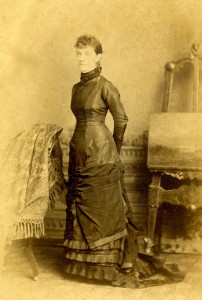 She was known as the “Most Beloved Woman in Florida” and the “Mother of all Women’s Clubs.” She was identified with practically every forward-looking movement in South Florida for more than 50 years. In 1885, she co-founded the Fort Myers Women’s Club along with Olive Stout and Flossie Hill. For 29 years, she also served as the organization’s president and guiding force. Although those who knew her in the later life marveled at her silver mane and the keen twinkle in her inquisitive eyes, she was once described in English publications as one of the “most beautiful titan haired girls in all England.” Her name was Julia Allen Hanson and her portrait joins those of Fort Myers’ other Founding Females compliments of Woolam.Hanson was born in
She was known as the “Most Beloved Woman in Florida” and the “Mother of all Women’s Clubs.” She was identified with practically every forward-looking movement in South Florida for more than 50 years. In 1885, she co-founded the Fort Myers Women’s Club along with Olive Stout and Flossie Hill. For 29 years, she also served as the organization’s president and guiding force. Although those who knew her in the later life marveled at her silver mane and the keen twinkle in her inquisitive eyes, she was once described in English publications as one of the “most beautiful titan haired girls in all England.” Her name was Julia Allen Hanson and her portrait joins those of Fort Myers’ other Founding Females compliments of Woolam.Hanson was born in 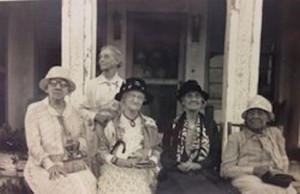 London, England on November 7, 1843 to a well-known and accomplished architect whose credits included designing the approaches to the London Bridge. She was painted by Byrne-Jones and Sir John Millais. Part of British high society, she was an intimate acquaintance of such famous figures as the Duke of Wellington, Charles Dickens, Lord
London, England on November 7, 1843 to a well-known and accomplished architect whose credits included designing the approaches to the London Bridge. She was painted by Byrne-Jones and Sir John Millais. Part of British high society, she was an intimate acquaintance of such famous figures as the Duke of Wellington, Charles Dickens, Lord 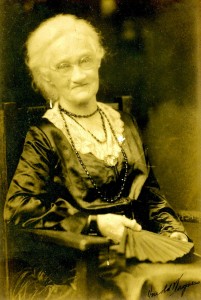 Tennyson, Anthony Trollope, Prince Arthur, the Duke of Devonshire and Florence Nightingale.
Tennyson, Anthony Trollope, Prince Arthur, the Duke of Devonshire and Florence Nightingale.
She came to the United States in 1880 after marrying noted physician Dr. Wm. Hanson. Four years later, the couple discovered the tiny cow town called Fort Myers and decided to settle here rather than continue on to Cuba as originally planned. Her first order of business was to establish a church in the town. To accomplish the feat, she fostered two Episcopal women’s organizations in order to raise the funds needed to build the church a few years later. “But her enthusiasm and ability extended to other fields,” the Fort Myers News-Press noted in Hanson’s November 30, 1934 obituary, “and she was identified with 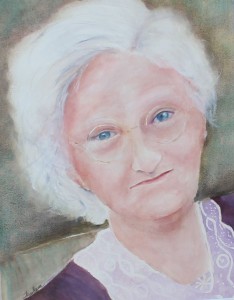 organizing the first W.C.T.U., the Women’s Club, the Friday Musicale, the Palmetto Society, the first reading association (which became the progenitor of the public library), the Cemetery Improvement Association, the first Lee Memorial Hospital Association, the first Sunday school, and the first Federation of Women’s Clubs.”
organizing the first W.C.T.U., the Women’s Club, the Friday Musicale, the Palmetto Society, the first reading association (which became the progenitor of the public library), the Cemetery Improvement Association, the first Lee Memorial Hospital Association, the first Sunday school, and the first Federation of Women’s Clubs.”
She also founded the first Needlework Guild and for many years was chairwoman of the Seminole Welfare Committee of the Florida Federation of Clubs. She was a Deputy Commissioner of the Florida Game and Fish Department and was recognized as a writer and artist on the subject of bird life in Florida. She was 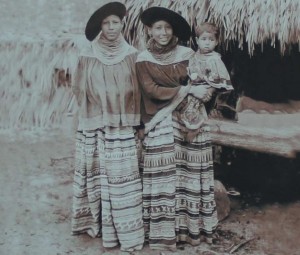 also instrumental in the passage of many laws for the protection of bird life and the care of the Seminoles.
also instrumental in the passage of many laws for the protection of bird life and the care of the Seminoles.
In fact, Julia Allen Hanson played such an important role in the development of South Florida that the 1914-15 Women’s Who’s Who of America devoted several paragraphs to reporting her many activities. “Besides being well known as a writer, artist and speaker,” the News-Press  summarized, “Mrs Hanson played the role of ‘mother’ to everybody and everything in Fort Myers and her refined influence was of great importance in the formative stages of the pioneer community.”
summarized, “Mrs Hanson played the role of ‘mother’ to everybody and everything in Fort Myers and her refined influence was of great importance in the formative stages of the pioneer community.”
“For half a century, she was so influential in community affairs that it is difficult to imagine what Fort Myers would have been without her progressive influence,” concludes local historian 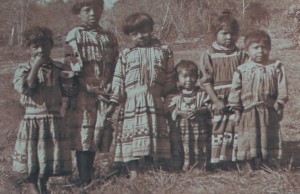 Gerri Reaves in her tome, Legendary Locals of Fort Myers.
Gerri Reaves in her tome, Legendary Locals of Fort Myers.
“Fort Myers has had some famous characters, good, bad and indifferent,” the New-Press waxed eloquently in the concluding paragraphs of Julia’s obituary. “There was the roaring cowboy, Dennis Sheridan, slain in a street scene during his tough 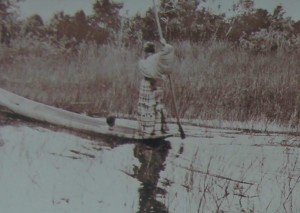 moments by the mild-mannered, soft spoken, stout-hearted city marshal, L.M. Stroup. There was Capt. F.A. Hendry, the benevolent leader of pioneer times, and the broad-shouldered Capt. ‘Bill’ Towles, strong man of a later date. There was Col. Peter O. Knight, who was the spark plug of the village when a youth of 18, and Stafford C. Cleveland, the erudite and eminent editor who, at
moments by the mild-mannered, soft spoken, stout-hearted city marshal, L.M. Stroup. There was Capt. F.A. Hendry, the benevolent leader of pioneer times, and the broad-shouldered Capt. ‘Bill’ Towles, strong man of a later date. There was Col. Peter O. Knight, who was the spark plug of the village when a youth of 18, and Stafford C. Cleveland, the erudite and eminent editor who, at 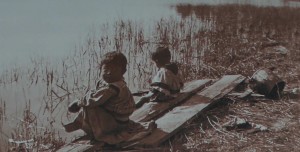 three score years, uprooted himself from the solid country of western New York to come and start a backwood newspaper. And there was Mrs. Julia A. Hanson, who lived and sparkled among these and other mighty men of the times from that day to yesterday. Like the most virile of them, she left her
three score years, uprooted himself from the solid country of western New York to come and start a backwood newspaper. And there was Mrs. Julia A. Hanson, who lived and sparkled among these and other mighty men of the times from that day to yesterday. Like the most virile of them, she left her  mark on the community. She came here in the mid-eighties, the bride of the late Dr. William Hanson. A ravishing beauty, she had been painted by famous artists and toasted by the gallants of England. Reared among gentlefolk and educated in the culture of the world’s highest civilization, she found herself a matron in the maturity of middle age, plumped down in a straggly pioneer village in the tropical wilds of South Florida …. [S]he helped, as much as any other, to endow Fort Myers with the charm which captivates all newcomers. Through her knowledge, and by her interest, she promoted the culture of the town from the day of her arrival in the lusty past to the times as recent as her final illness.”
mark on the community. She came here in the mid-eighties, the bride of the late Dr. William Hanson. A ravishing beauty, she had been painted by famous artists and toasted by the gallants of England. Reared among gentlefolk and educated in the culture of the world’s highest civilization, she found herself a matron in the maturity of middle age, plumped down in a straggly pioneer village in the tropical wilds of South Florida …. [S]he helped, as much as any other, to endow Fort Myers with the charm which captivates all newcomers. Through her knowledge, and by her interest, she promoted the culture of the town from the day of her arrival in the lusty past to the times as recent as her final illness.”
.
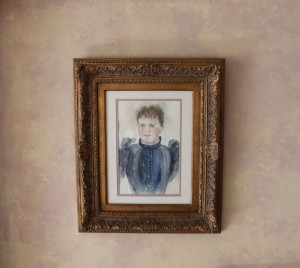 Woolam has rendered a delicate watercolor of Julia Isabel Frierson Hendry for the Fort Myers Founding Females Portrait Exhibition. “I was delighted with the concept of recognizing the founding females of Fort Myers in this unique way,” Woolam remarks. “I chose Julia because of her time period (a favorite of mine), and she looked like a strong confident woman. After reading her bio there was no question in my mind – like my mother, born at the end of the 19th
Woolam has rendered a delicate watercolor of Julia Isabel Frierson Hendry for the Fort Myers Founding Females Portrait Exhibition. “I was delighted with the concept of recognizing the founding females of Fort Myers in this unique way,” Woolam remarks. “I chose Julia because of her time period (a favorite of mine), and she looked like a strong confident woman. After reading her bio there was no question in my mind – like my mother, born at the end of the 19th  century, and who lived to 101. Painting Julia gave me a better connection to Fort Myers, its history and the pleasure of trying to present the image as I felt her to be, strong and beautiful.”
century, and who lived to 101. Painting Julia gave me a better connection to Fort Myers, its history and the pleasure of trying to present the image as I felt her to be, strong and beautiful.”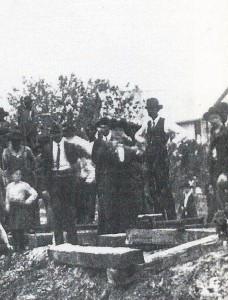 confidently refreshed the church flowers the next morning. Sure enough, her betrothed rode in and they were married that afternoon. Remember, this was long before the days of cell phones and Jimmy had been on the frontier tending the Hendrys’ cattle when a storm hit that was so severe it not only prevented him from making it to his wedding, but from getting word to Julia that he’d be delayed.
confidently refreshed the church flowers the next morning. Sure enough, her betrothed rode in and they were married that afternoon. Remember, this was long before the days of cell phones and Jimmy had been on the frontier tending the Hendrys’ cattle when a storm hit that was so severe it not only prevented him from making it to his wedding, but from getting word to Julia that he’d be delayed.














 Tom Hall is both an amateur artist and aspiring novelist who writes art quest thrillers. He is in the final stages of completing his debut novel titled "Art Detective," a story that fictionalizes the discovery of the fabled billion-dollar Impressionist collection of Parisian art dealer Josse Bernheim-Jeune, thought by many to have perished during World War II when the collection's hiding place, Castle de Rastignac in southern France, was destroyed by the Wehrmacht in reprisal for attacks made by members of the Resistance operating in the area. A former tax attorney, Tom holds a bachelor's degree as well as both a juris doctorate and masters of laws in taxation from the University of Florida. Tom lives in Estero, Florida with his fiancee, Connie, and their four cats.
Tom Hall is both an amateur artist and aspiring novelist who writes art quest thrillers. He is in the final stages of completing his debut novel titled "Art Detective," a story that fictionalizes the discovery of the fabled billion-dollar Impressionist collection of Parisian art dealer Josse Bernheim-Jeune, thought by many to have perished during World War II when the collection's hiding place, Castle de Rastignac in southern France, was destroyed by the Wehrmacht in reprisal for attacks made by members of the Resistance operating in the area. A former tax attorney, Tom holds a bachelor's degree as well as both a juris doctorate and masters of laws in taxation from the University of Florida. Tom lives in Estero, Florida with his fiancee, Connie, and their four cats.
Thank you for the interesting , well written stories and information. What fun it is to imagine the women who had such an elegant beginning in life finding themselves in a remote area far from any chance of running home to mother. And how good it is to find women dedicated to making a good life for themselves, their families and others in the community.
There are women like that today with different situations, but similar challenges who bite the bullet and make the world a better place.
Thank you.
J. Wolf